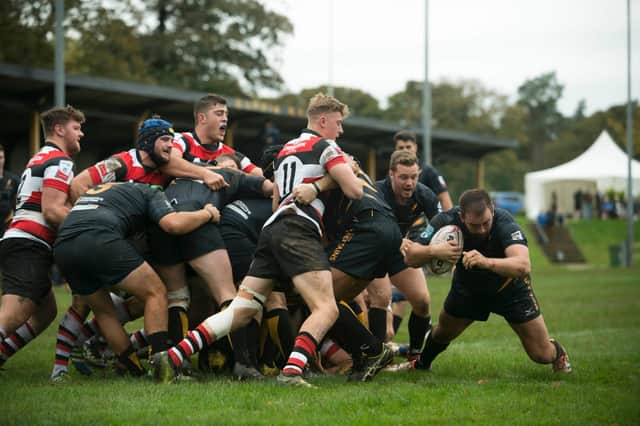Allan Massie: Crucial that amateur rugby is able to resume in the autumn


That’s all fine, even if one may think that England, with their huge strength in depth, is not the opposition one would have chosen for the first A-team international in years. It’s almost 40 years since Andy Irvine remarked in his autobiography that while a Scotland First XV could, on a good day at least, hold its own against anyone, a Second XV would struggle to do so, and a Third XV would have nae chance. It’s probably not so different today.
What, however, of club rugby? There has been none for more than a year. The Super Six semi-pro clubs have been treading water, one consequence being that some of the young players in the Edinburgh and Glasgow squads have also had a season without much match experience. They have at least trained and practised, and presumably benefitted from the experience. It’s been different for the amateurs.
Advertisement
Hide AdAdvertisement
Hide AdThere has been no club rugby for more than a season and the Borders Sevens haven’t been played since the spring of 2019. We all hope of course that things can return to normal by the time the 21-22 season is due to start in September, for there is a fear, even horrid suspicion, that many clubs couldn’t survive another barren autumn. Members – both playing and non-playing ones – might drift away. School rugby and youth rugby have been affected and damaged in the same way.
The clubs are the life-blood of the game. They are also, as, we are often reminded, the SRU. The reminder is necessary because so much information that comes out of Murrayfield now is related to business; to sponsorship deals done and investments made. It couldn’t be otherwise now that rugby at the top level is not only a professional game, but a very expensive and demanding one.
The club game isn’t of course what it was. It now, unavoidably I fear, receives very little attention from the national press or from TV. We were spoiled in the Borders 40 years ago. When you went to a match between two Border clubs, there would usually be at least half-a-dozen Scottish internationalists – past, present or probably future – on view. There were 11 Borderers in the Scotland XV that beat France in the 1984 Grand Slam decider, and they came from six clubs: Gala, Selkirk, Hawick, Kelso, Melrose and Jed-Forest. It’s no wonder that crowds could still for local derbies be measured in the thousands rather than hundreds or, as sometimes today, only in scores.
Of course Border League clubs and the biggest clubs in Edinburgh and Glasgow weren’t typical. Most club rugby attracted few spectators and many who loyally did turn up to watch their local team never saw international players in action at a club game. This didn’t matter. Club rugby was kept going by the dedication of committee men, wives, sisters, girlfriends, daughters, as well as players. Without off-the-pitch enthusiasts it would have been impossible. This is still the case and one gratifying development is that there are now many more clubs, especially in the north of the country, that there were when I was young. My memory is that there were five clubs in Aberdeen, nothing much to the north except RAF Kinloss and Highland in Inverness, and nothing between Aberdeen and Dundee. It’s very different today.
Without lots of clubs rugby can be no more than an elite sport, never a popular one. The Welsh clubs in the Pro14 are no stronger than Glasgow and Edinburgh, but Welsh rugby is still underpinned by a host of small clubs that have deep roots in towns and villages. In parts of Scotland the roots are still in shallow ground, clubs therefore always in some danger of withering.
This is why it is essential that the SRU exerts itself to support the amateur game. I doubt if that game can afford another dead or truncated season. It’s hard to maintain enthusiasm when nothing is happening. People drift away. Players find other interests. The next generation of school leavers is unattached. There is no magnet of a club to attract them.
Rugby at the professional level could probable survive the further weakening of the club game, but it would do so, as I say, only as an elite sport. Murrayfield might still be packed for the Six Nations, but there would be fewer people in Scotland who would be deeply embedded in the game. There would be a much weaker sense of a rugby community.
So we must have the amateur game back this autumn. The longer clubs aren’t playing, the more will find it first difficult, then impossible, to keep going. There will be far fewer people for whom rugby is an important part of their life, of their identity indeed. And we would all be the poorer for this.
